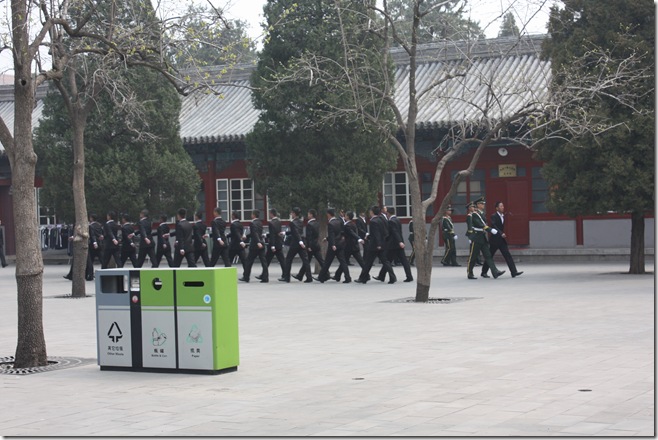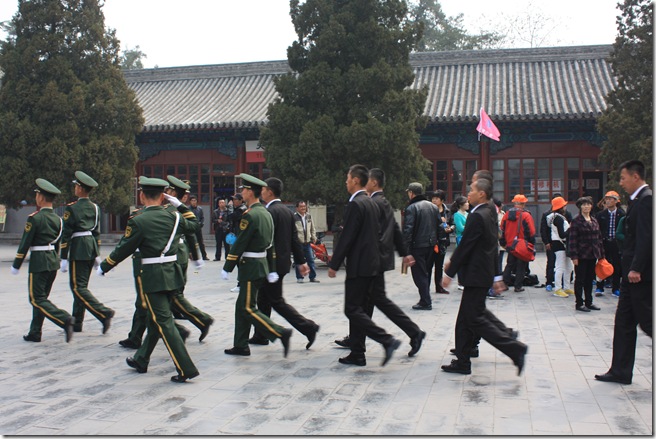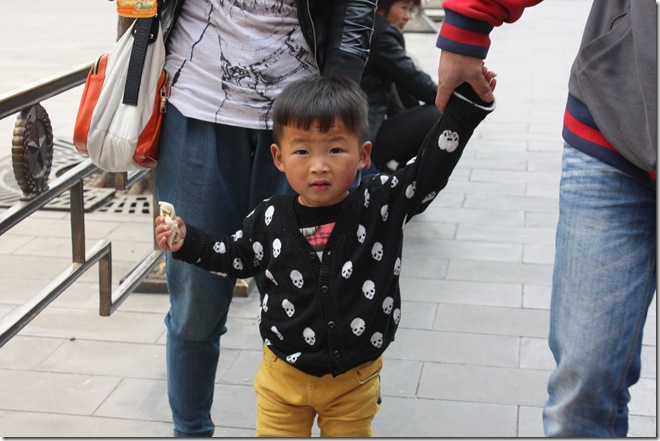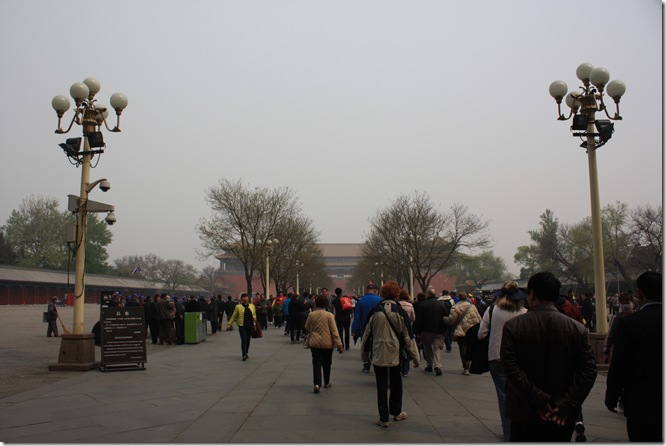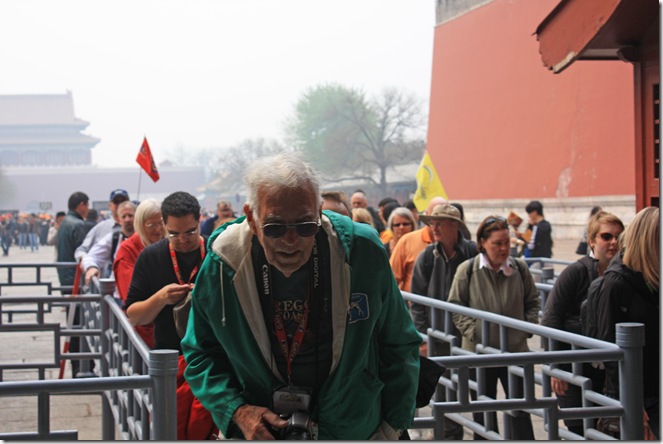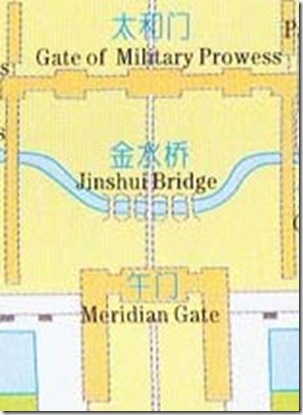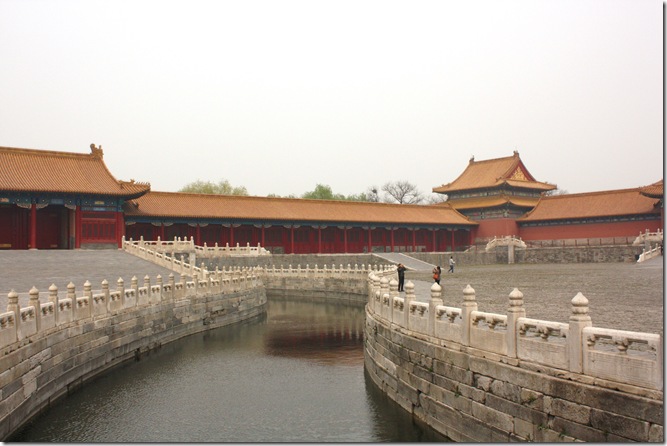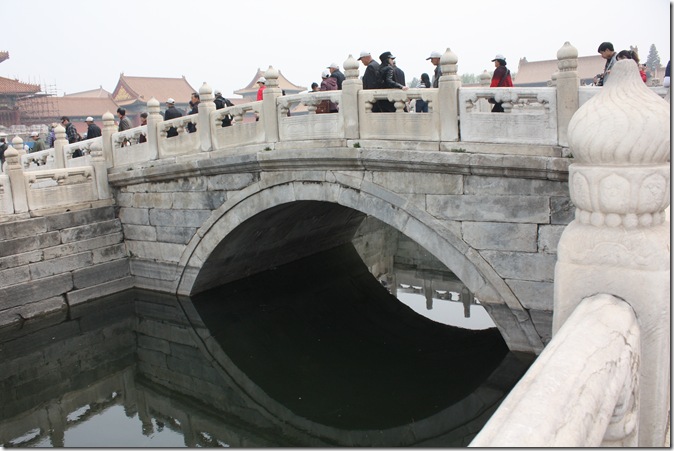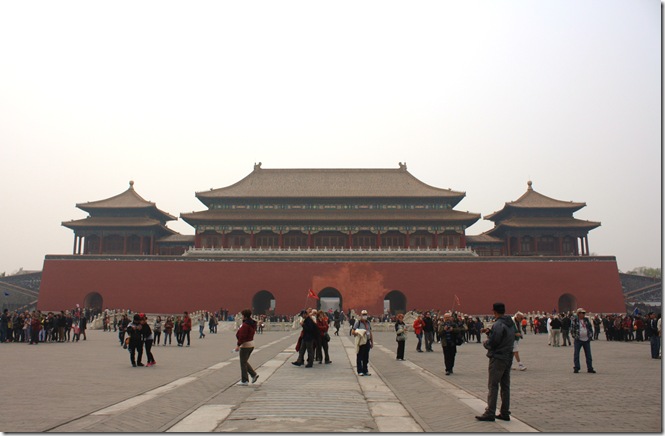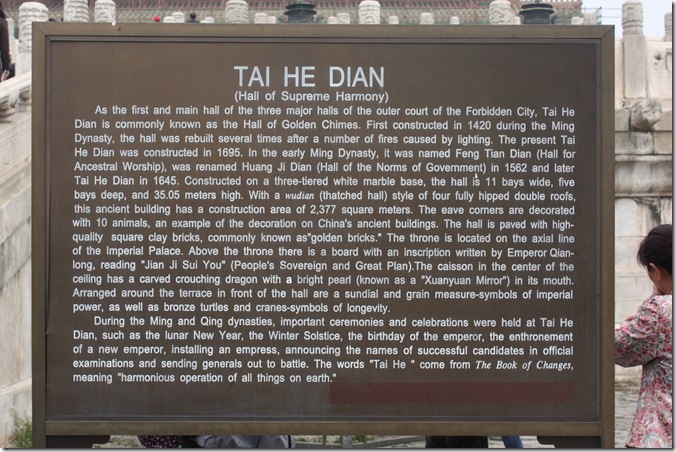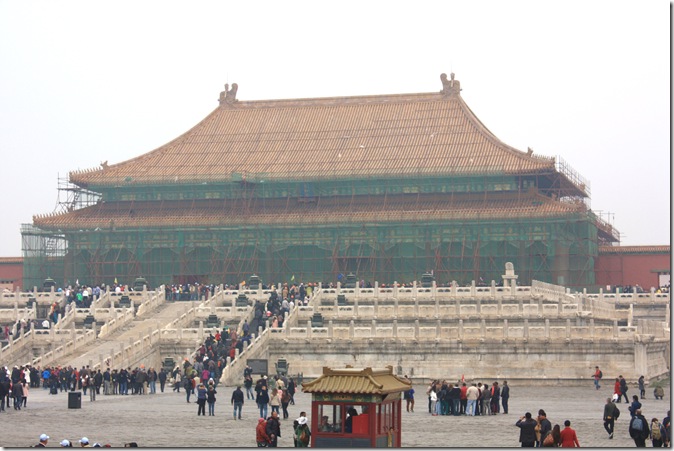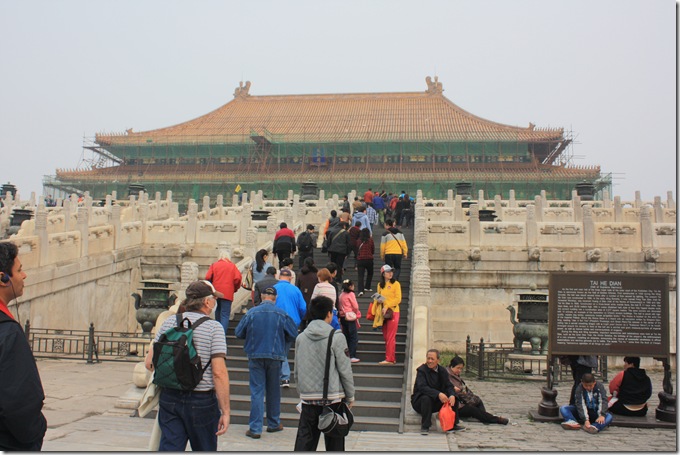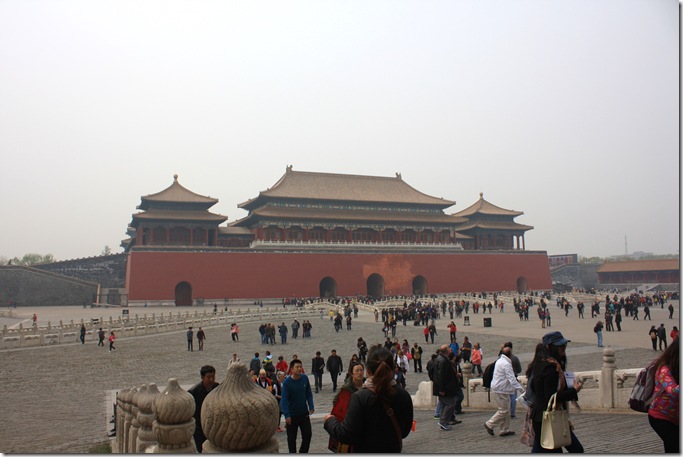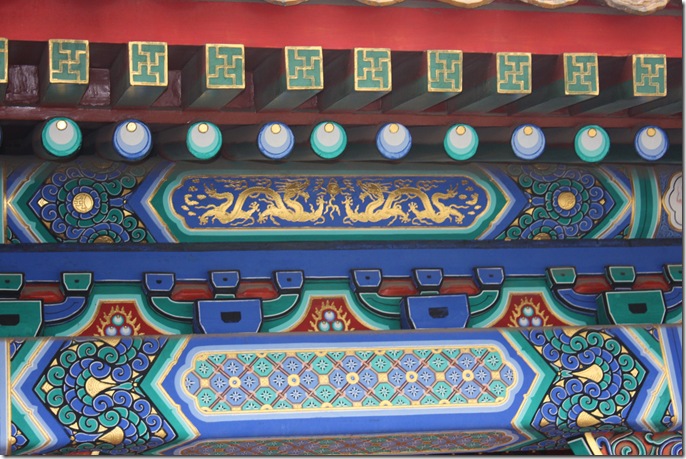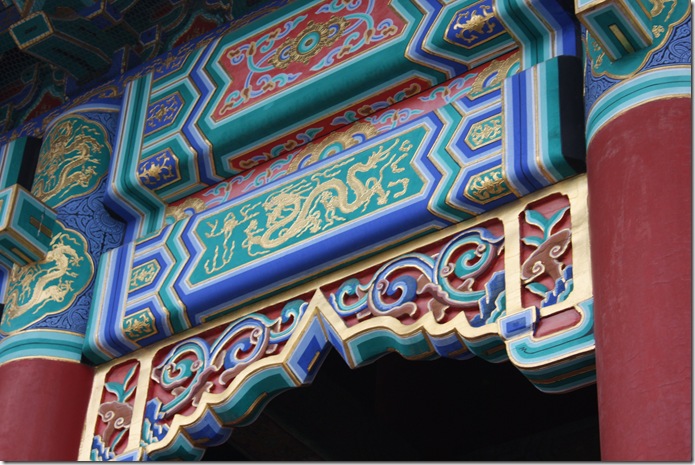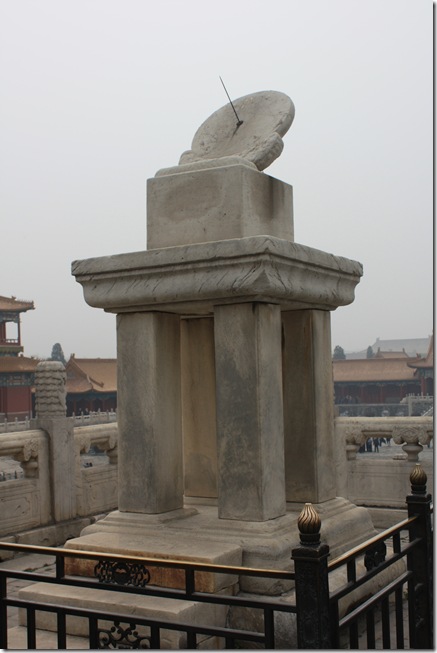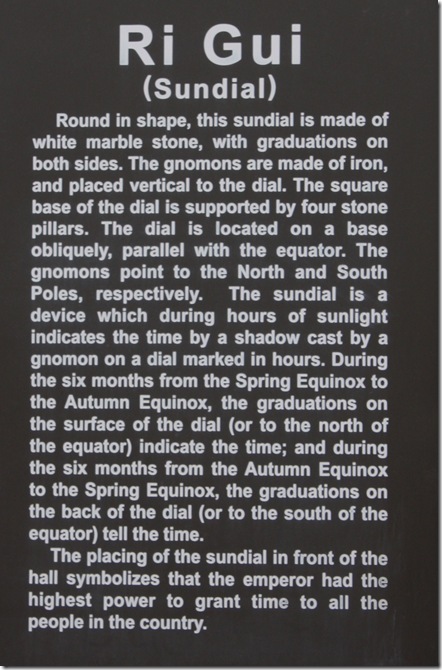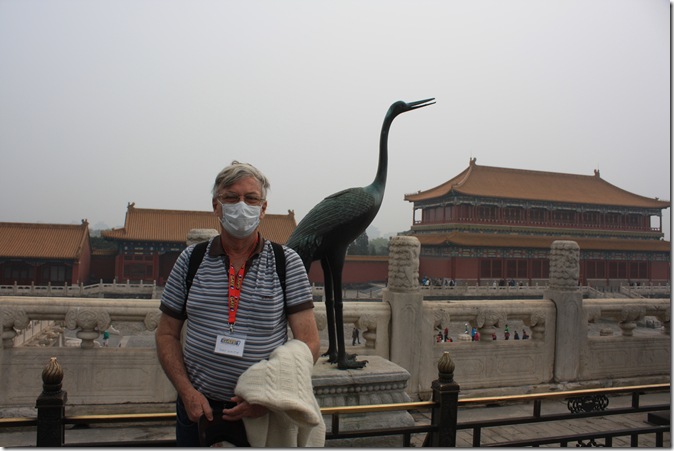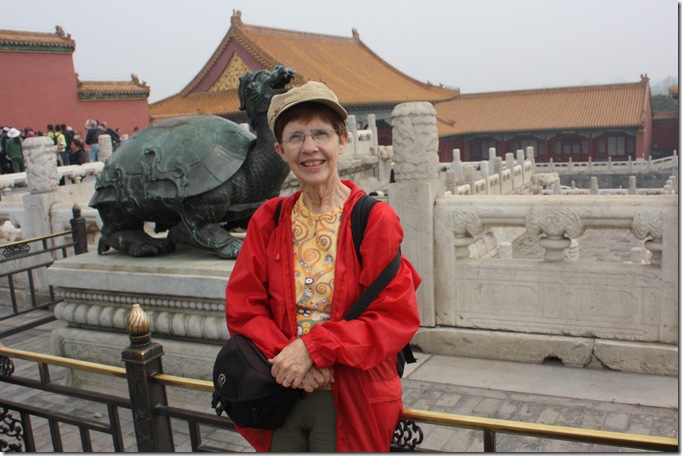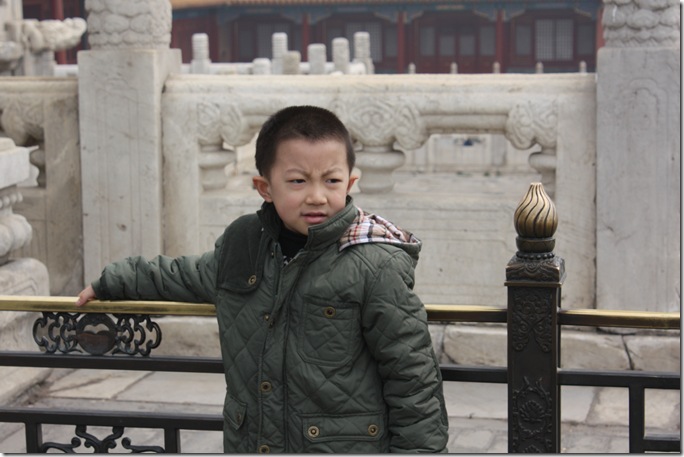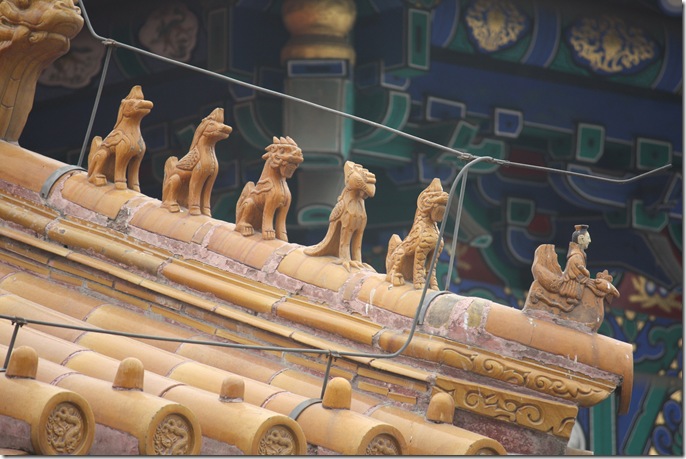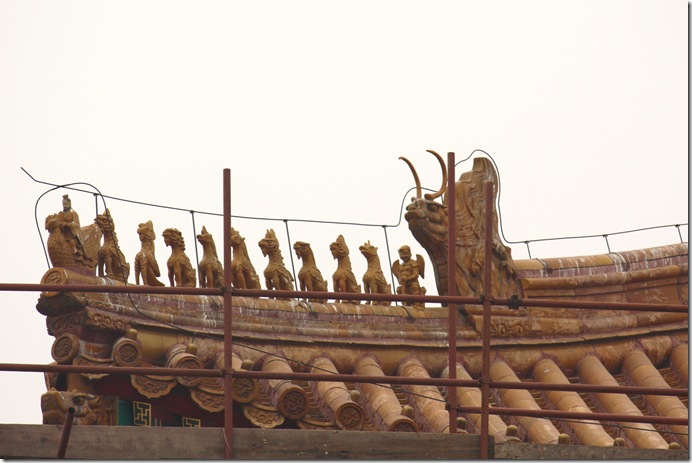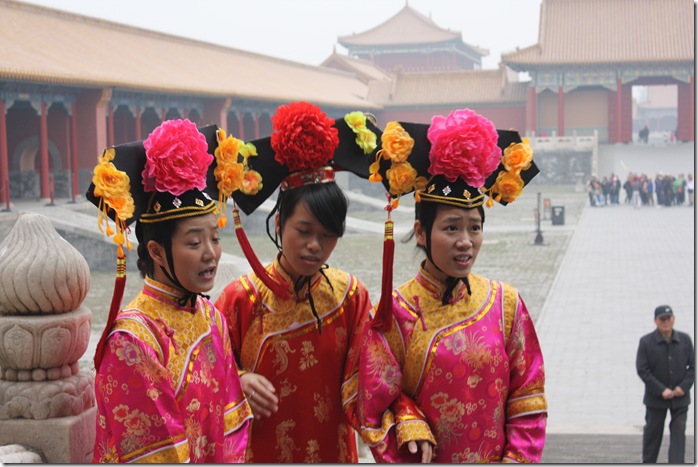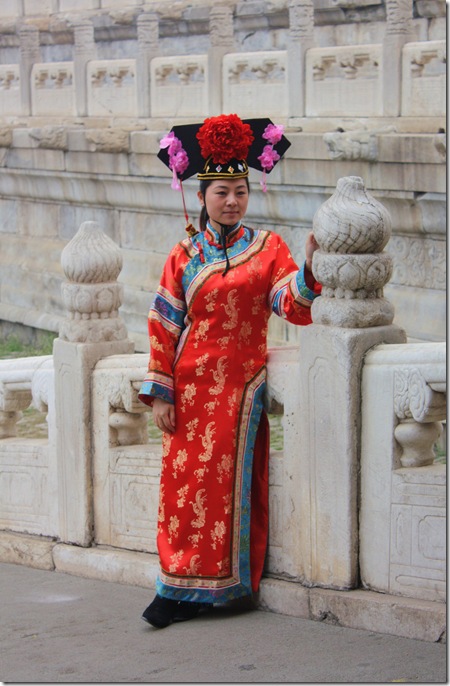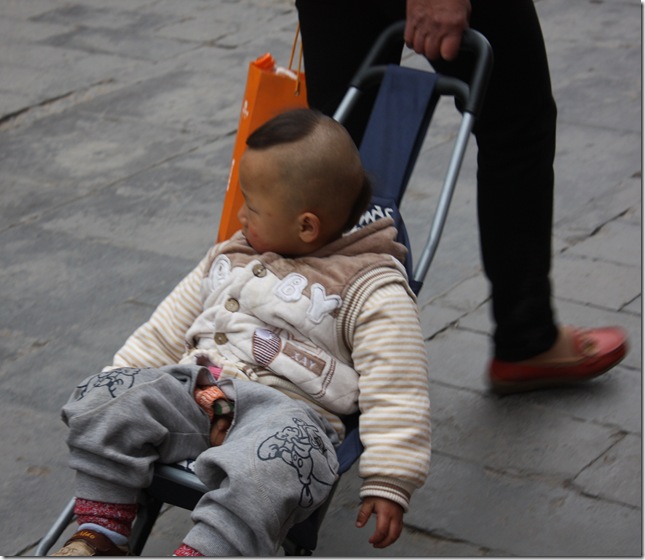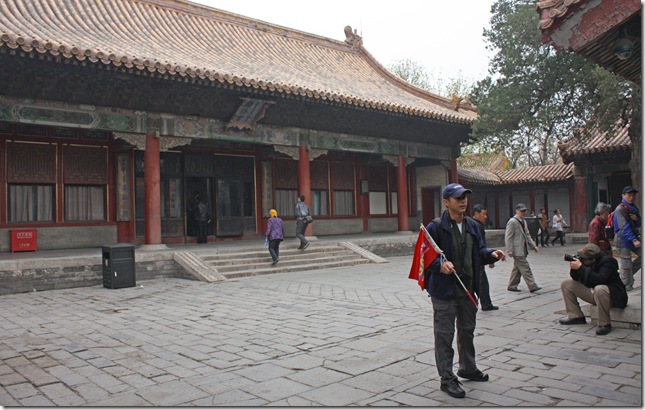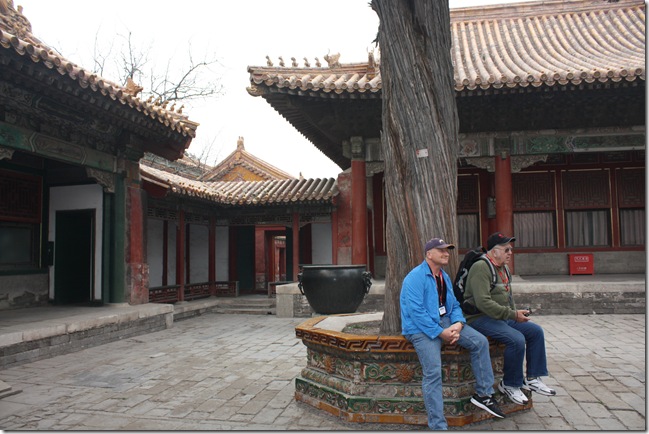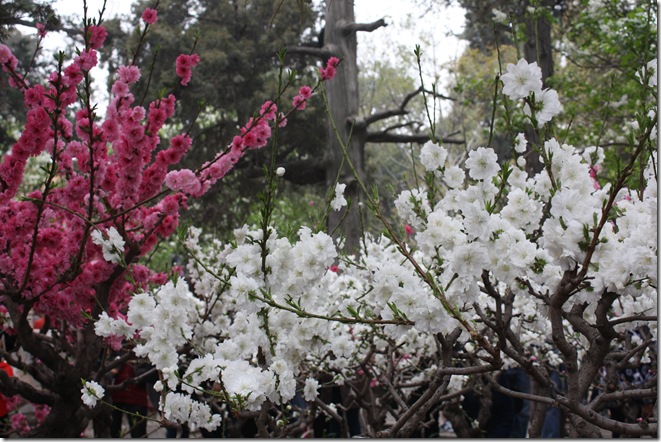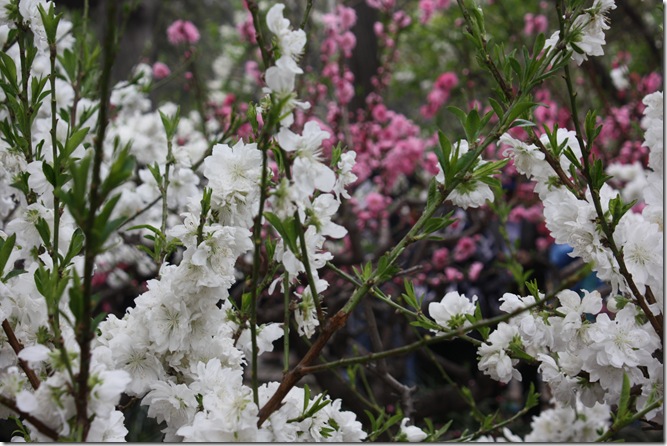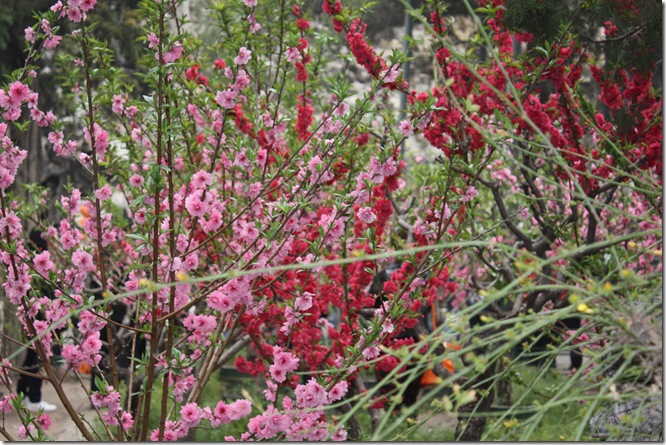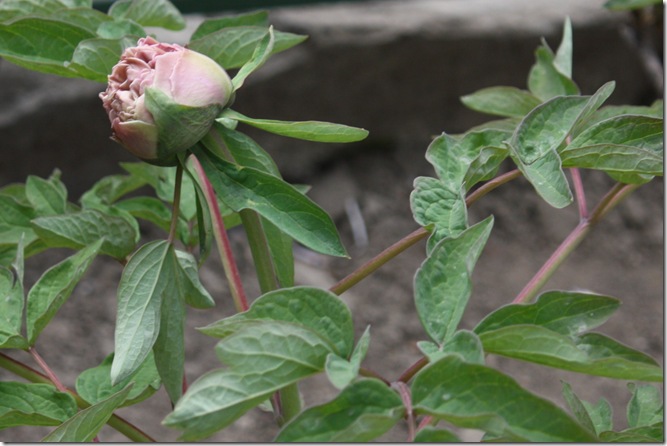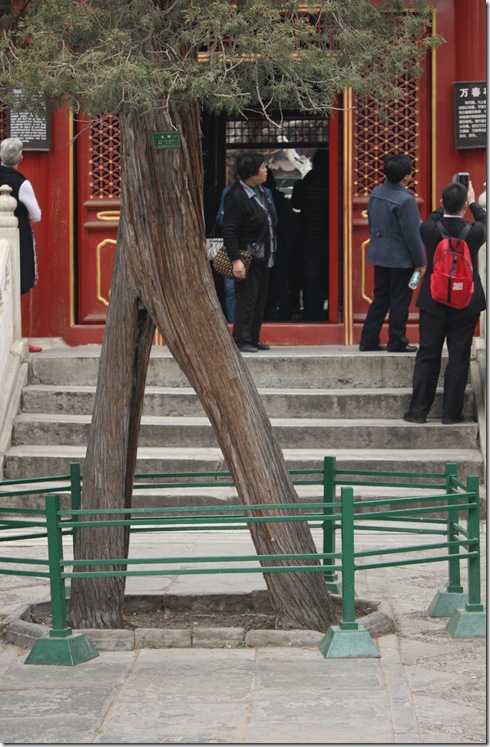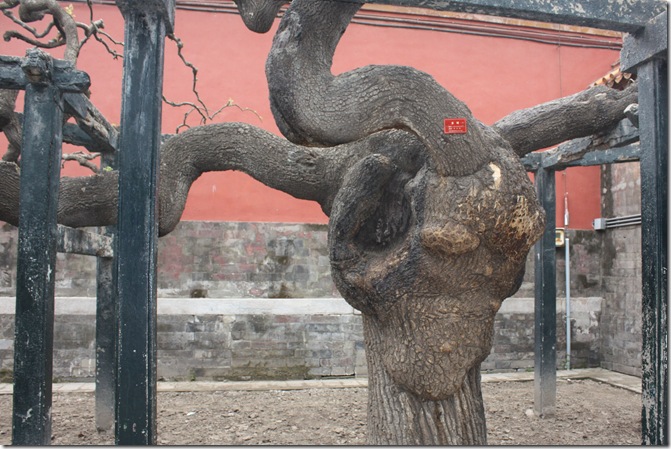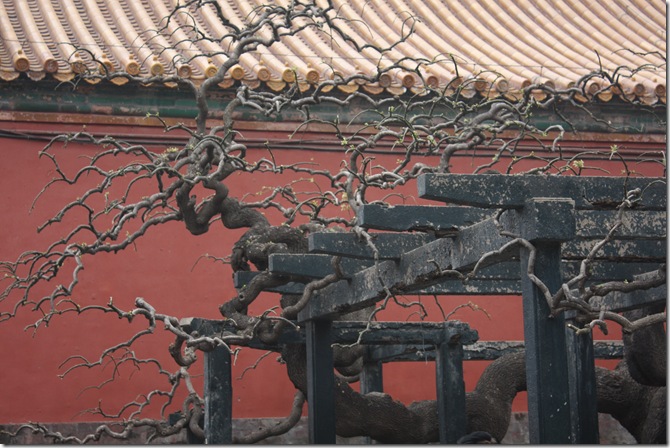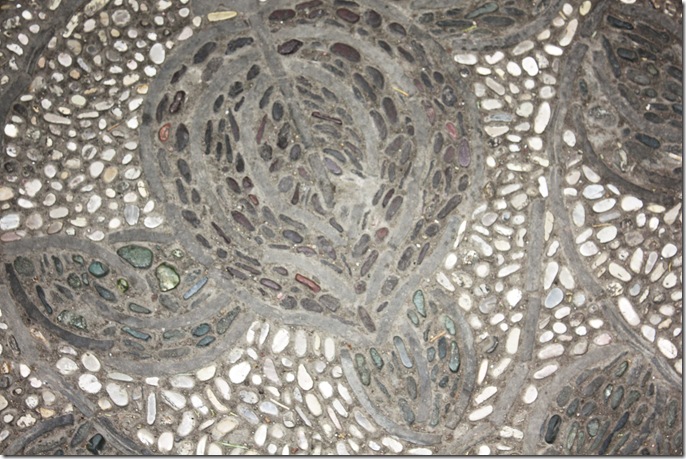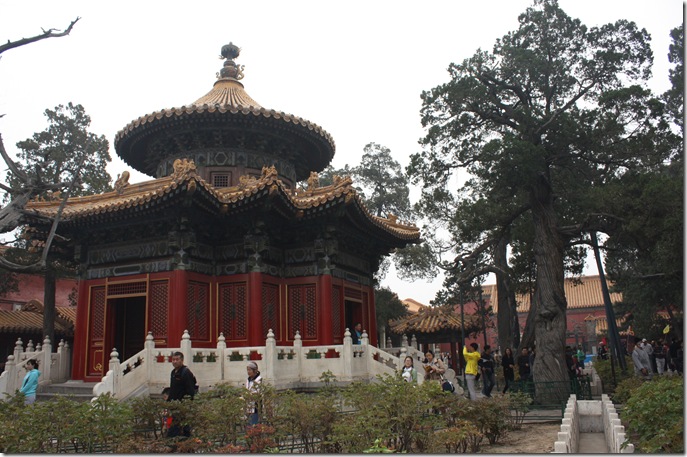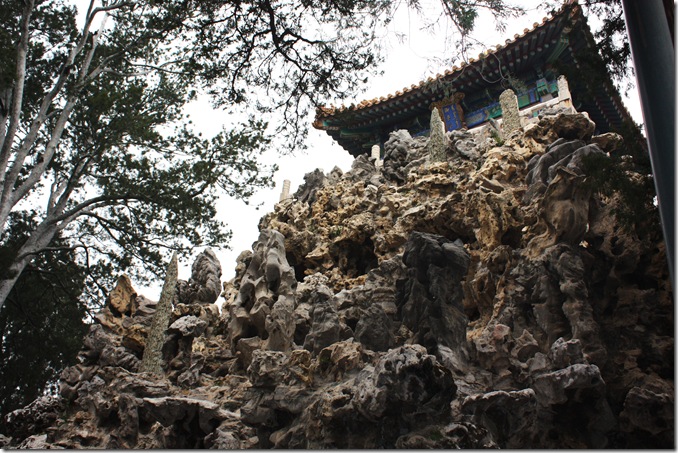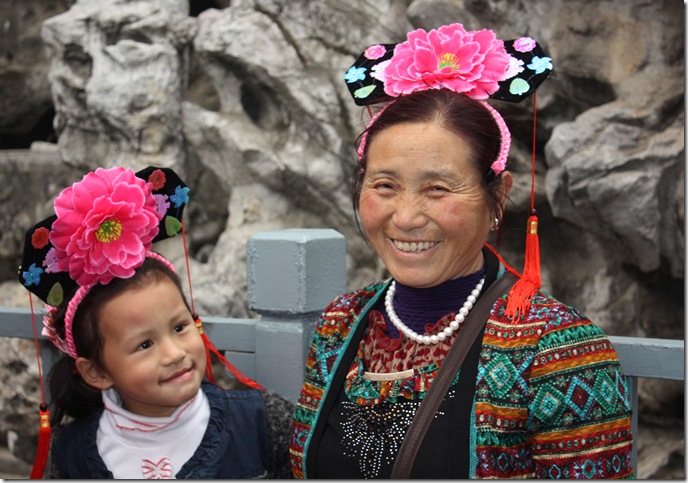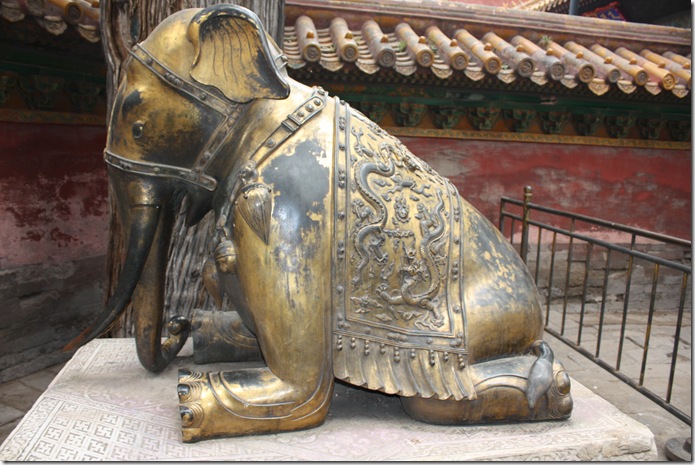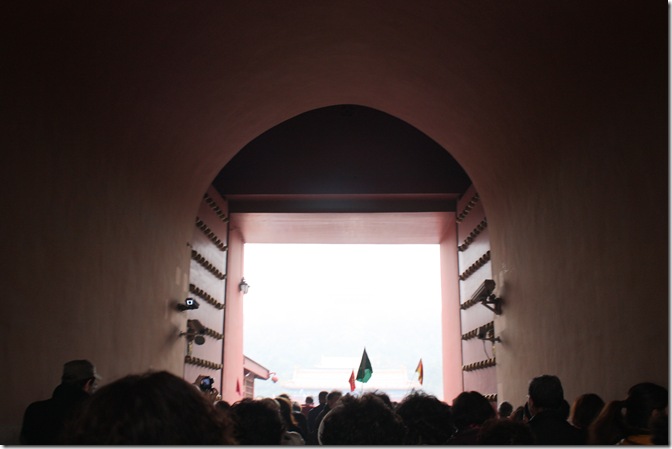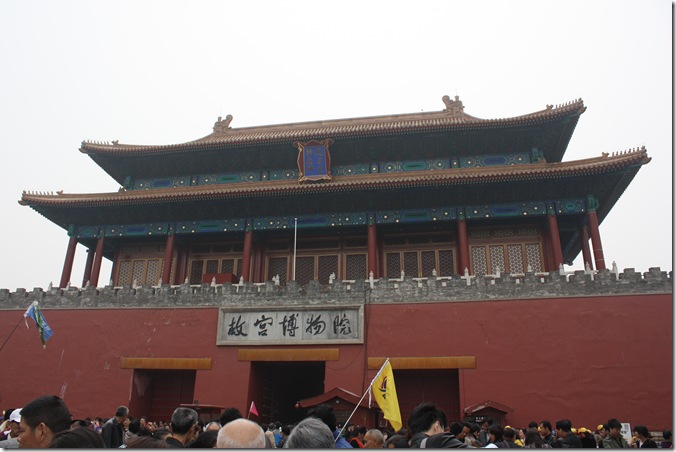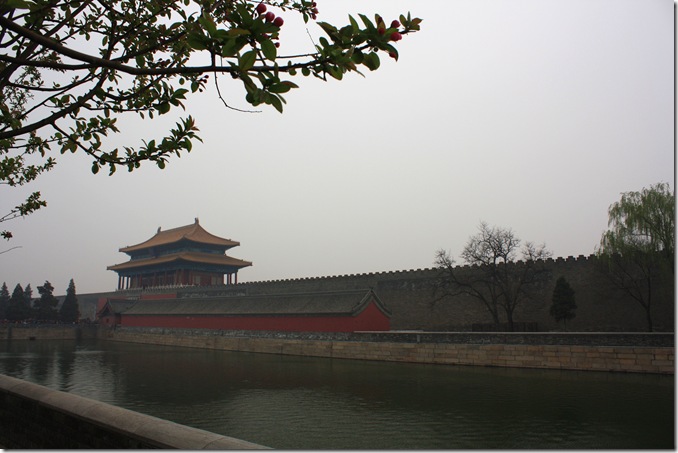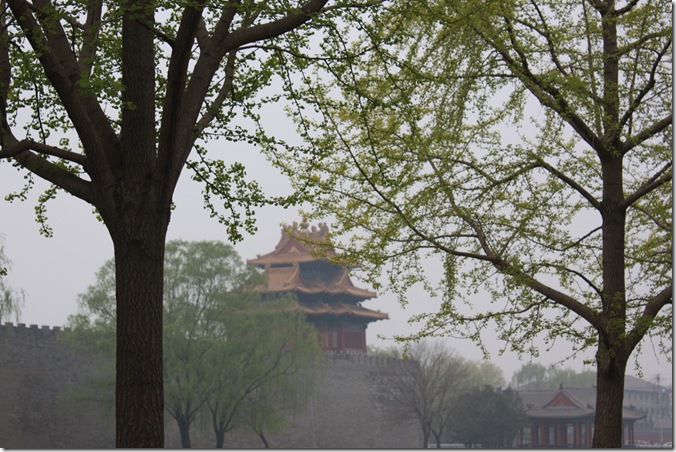Monday 22nd April, 2013.
Ringed by a 52m-wide moat at the very heart of Běijīng, the fantastically named Forbidden City is China’s largest and best-preserved complex of ancient buildings, and in fact is is the largest and most complete existing palace in the whole world.. So called because it was off limits for 500 years, the otherworldly palace, initially set up in 1420, was the reclusive home to 24 emperors until the Republic demoted the last Qing emperor to has-been.
“In former ages the price for uninvited admission was instant execution; these days Y40 will do” (Lonely Planet).

Today, the Forbidden City is prosaically known as the Palace Museum (Lonely Planet).
Map from www.google.com.au/imgres?q=beijing+forbidden+city+map
Once we had entered the Tiānānmén Gate from Tiānānmén Square, we were in a passageway where there seemed to be a lot of marching practice happening.
Some of the marchers were in uniform and some were not.
There were a lot of Chinese visitors going to the Forbidden City, including many couples with their one child.
We all trooped off towards the Meridian Gate.
Restored in the 17th century, the Meridian Gate took us over the 52 metre wide moat which still surrounds the Forbidden City.
No stampeding through this gate! Here on the left is our group, coming through in an orderly fashion.
Once through the Meridian Gate, we crossed the Jinshui Bridge spanning the Golden Stream, which in this courtyard is shaped to resemble a Tartar bow. (Can’t say I noticed the “Tartar bow” shape of the Golden Stream at the time – I only read about it later. The stream wasn’t exactly what I would have called golden either.)
Map from www.google.com.au/imgres?q=beijing+forbidden+city+map
The Jinshui Bridge was actually a series of five marble bridges over the (non) Golden Stream. Must have been totally stunning in its day. See Pat in his anti-pollution mask on the top of this bridge, along with some other members of our group.
Looking back on the Meridian Gate, after we had come in. When this was a “working palace” only the Emperor was permitted to enter by the middle of the five gates, and only he could use the middle of the five marble bridges, which you can just make out in this picture. You can see Ahwen in this picture with his red Gate 1 sign.
This colossal courtyard could hold imperial audiences of up to 100,000 people.
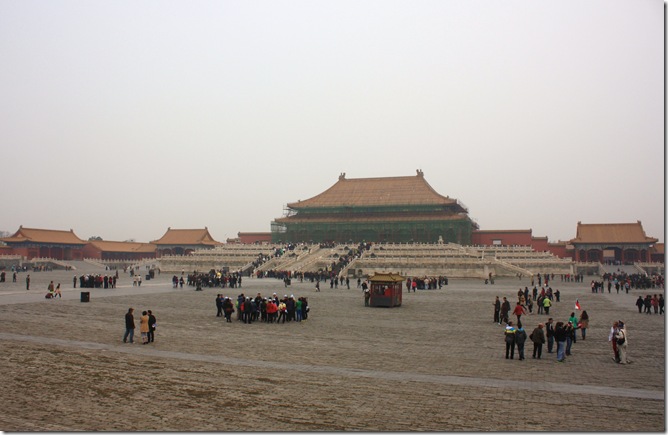
On the far side of this huge courtyard are the Three Great Halls which comprise the heart of the Forbidden City. The imposing Hall of Supreme Harmony is the most important and the largest structure in the Forbidden City. Originally built in the 15th century, it was used for ceremonial occasions, such as the Emperor’s birthday, the nomination of military leaders and coronations.
More info about the Hall of Supreme Harmony. I was alarmed by the fact that the fires which destroyed the building several times were “caused by lighting”.
Interestingly, the writing which has been painted over at the bottom of the sign reads: “Made possible by the American Express Company.”
Approaching the Hall of Supreme Harmony. How many tour group flags can you see.
Going up the steps of the Hall of Supreme Harmony. There’s Pat in his mask.
Bronze shuǐgāng (vats) – once containing water for dousing fires – stand in front of the hall; in all, 308shuǐgāng were dotted around the Forbidden City, with fires lit under them in winter to keep them from freezing over.
Looking from the steps of the Hall of Supreme Harmony back across the courtyard to the Meridian Gate. On the left hand side you can see the marble railings beside the Tartar bow shaped Golden Stream and the five marble bridges in the middle.
The exterior of of the Hall of Supreme Harmony is being colourfully restored.
Sundial, and all you would ever want to know about it.
Pat and a bird.
Jan and a turtle.
Young tourist.
The corners of the roofs of the buildings have little animals on them; the more animals, the more important the building.
This building must have been quite important.
Behind the Hall of Supreme Harmony are the Hall of Middle Harmony and then the Hall of Preserving Harmony.
One of the buildings housed a costume museum …..
….. complete with models.
Wall detail.
Toilet training in China involves wearing crotchless pants – much better for the environment than filling it up with disposable nappies. Initially, I photographed this Forbidden City visitor for his haircut – it wasn’t until I looked at the photo later that I realised what he was wearing, or rather not wearing.
In the Concubines’ Living Area, Ahwen explained to us some of the living conditions of palace life.
Taking a break. The palace grounds measure three kilometres from south to north.
Some of the buildings had the most exquisite names, e.g:
- Pavilion of Respecting Auspiciousness
- Hall of Heroic Splendour
- Gate of Divine Military
- Hall of Character Cultivation
- East and West Flowery Gates
- Well of Concubine Zhen (Concubine Zhen was the beloved concubine of Emperor Guanxu, and she supported his views on constitutional reform and modernization. In 1900, the Empress Dowager Cixi took the Emperor into custody, suppressed the reform and had Concubine Zhen thrown into the well.)
However, my absolute favourite is:
- Palace of Vigorous Old Age
We didn’t get to go to that one, but I have dreams about what might happen there!
You could easily spend several days seeing the buildings that are currently open in the Forbidden City, but we were now running out of time, so Ahwen took us to the Imperial Garden, on the way out.
I think these are plum blossoms, but whatever they are, they were magnificent.
I know this is a magnolia tree. The building behind it has only three animals on each roof corner, so can’t be terribly important – perhaps a garden pergola for the concubines.
This was the only peony (I think it’s a peony) that I saw in all of China. Thinking it was China’s national flower, I made a point of photographing it. When I looked it up, this is what I found:
In 1903, the Qing Dynasty declared the peony as the national flower. Currently, the Republic of China on Taiwan designates the plum blossom as the national flower, while the People’s Republic of China has no legally designated national flower. In 1994, the peony was proposed as the national flower after a nationwide poll, but the National People’s Congress failed to ratify the selection. In 2003, another selection process has begun, but to date, no choice has been made. (Wikipedia).
The Imperial Garden is a classical Chinese arrangement of fine landscaping, rockeries, walkways and pavilions among ancient and malformed cypresses propped up on stilts.
Mosaic paths in the garden.
A pavilion in the garden.
The 10 metre high artificial Hill of Accumulated Elegance (originally named the Hill of Accumulated Embroidery) was made of rocks piled against the northern palace wall on the the original site of the Hall of Appreciating Flowers. On the top stands the Pavilion of Imperial Scenery.
On the Double Ninth Festival every year, the Emperors, Empresses and Imperial Concubines climbed the hill. Luckily, there is a path.
I think these are tourists in their Forbidden City visiting outfits, standing beside the Hill of Accumulated Elegance.
As you approach the Shénwǔ Gate at the northern entrance, you find a pair of bronze elephants, whose front legs bend in anatomically impossible fashion (Lonely Planet).
Out the Shénwǔ Gate and over the moat we all trooped, having completed the three kilometre walk through the Forbidden City from south to north. Many of the buildings are not open to the public, and it would take days to properly see the ones which are open.
Outside the Shénwǔ Gate were great crowds of people getting themselves sorted into their various tour groups.
We had to walk along beside the moat for a bit to reach our bus, which was parked beside many other buses. To the left, you can just make out a throng of people crossing the moat.
We boarded our bus with a glimpse of one of the corner turrets of the Forbidden City through the trees.
